Welcome to Bait Al Noor Marble & Granite Trading L.L.C
Manufacturer / Exporter / Supplier Of AMBER GOLD MARBLE, Crystal Yellow Granite, Lime Stone, Onyx Marble, Sandstone Marble, Travertine Marble
Welcome to Bait Al Noor Marble & Granite Trading L.L.C
Manufacturer / Exporter / Supplier Of AMBER GOLD MARBLE, Crystal Yellow Granite, Lime Stone, Onyx Marble, Sandstone Marble, Travertine Marble
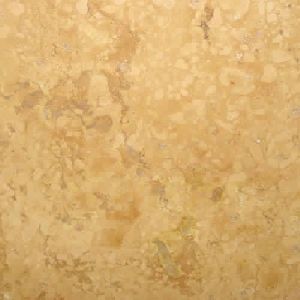
Marble is a metamorphic rock that forms when limestone is subjected to the heat and pressure of metamorphism. It is composed primarily of the mineral calcite (CaCO3) and usually contains other minerals, such as clay minerals, micas, quartz, pyrite, iron oxides, and graphite. Under the conditions of metamorphism, the calcite in the limestone recrystallizes to form a rock that is a mass of interlocking calcite crystals. A related rock, dolomitic marble, is produced when dolostone is subjected to heat and pressure. How Does Marble Form? Most marble forms at convergent plate boundaries where large areas of Earth's crust are exposed to regional metamorphism. Some marble also forms by contact metamorphism when a hot magma body heats adjacent limestone or dolostone. Before metamorphism, the calcite in the limestone is often in the form of lithified fossil material and biological debris. During metamorphism, this calcite recrystallizes and the texture of the rock changes. In the early stages of the limestone-to-marble transformation, the calcite crystals in the rock are very small. In a freshly-broken hand specimen, they might only be recognized as a sugary sparkle of light reflecting from their tiny cleavage faces when the rock is played in the light. As metamorphism progresses, the crystals grow larger and become easily recognizable as interlocking crystals of calcite. Recrystallization obscures the original fossils and sedimentary structures of the limestone. It also occurs without forming foliation, which normally is found in rocks that are altered by the directed pressure of a convergent plate boundary. Recrystallization is what marks the separation between limestone and marble. Marble that has been exposed to low levels of metamorphism will have very small calcite crystals. The crystals become larger as the level of metamorphism progresses. Clay minerals within the marble will alter to micas and more complex silicate structures as the level of metamorphism increases. Ability to Accept a Polish After being sanded with progressively finer abrasives, marble can be polished to a high luster. This allows attractive pieces of marble to be cut, polished, and used as floor tiles, architectural panels, facing stone, window sills, stair treads, columns, and many other pieces of decorative stone.
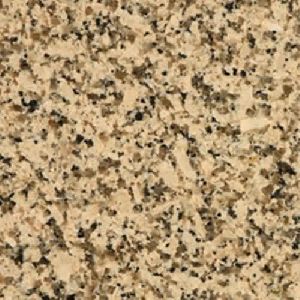
Granite is a light-colored igneous rock with grains large enough to be visible with the unaided eye. It forms from the slow crystallization of magma below Earth's surface. Granite is composed mainly of quartz and feldspar with minor amounts of mica, amphiboles, and other minerals. This mineral composition usually gives granite a red, pink, gray, or white color with dark mineral grains visible throughout the rock. The Best-Known Igneous Rock Granite is the best-known igneous rock. Many people recognize granite because it is the most common igneous rock found at Earth's surface and because granite is used to make many objects that we encounter in daily life. These include counter tops, floor tiles, paving stone, curbing, stair treads, building veneer, and cemetery monuments. Granite is used all around us - especially if you live in a city. Multiple Definitions of Granite The word "granite" is used in a variety of ways by different people. A simple definition is used in introductory courses; a more precise definition is used by petrologists (geologists who specialize in the study of rocks); and, the definition of granite expands wildly when used by people who sell decorative stone such as countertops, tile, and building veneer. These multiple definitions of granite can lead to communication problems. However, if you know who is using the word and who they are communicating with, you can interpret the word in its proper context. Three common usages of the word "granite" are explained below. A) Introductory Course Definition Granite is a coarse-grained, light-colored igneous rock composed mainly of feldspars and quartz with minor amounts of mica and amphibole minerals. This simple definition enables students to easily identify the rock based upon a visual inspection. B) Petrologist's Definition Granite is a plutonic rock in which quartz makes up between 10 and 50 percent of the felsic components and alkali feldspar accounts for 65 to 90 percent of the total feldspar content. Applying this definition requires the mineral identification and quantification abilities of a competent geologist. Many rocks identified as "granite" using the introductory course definition will not be called "granite" by the petrologist - they might instead be alkali granites, granodiorites, pegmatites, or aplites. A petrologist might call these "granitoid rocks" rather than granites. There are other definitions of granite based upon mineral composition. C) Commercial Definition The word "granite" is used by people who sell and purchase cut stone for structural and decorative use. These "granites" are used to make countertops, floor tiles, curbing, building veneer, monuments, and many other products. In the commercial stone industry, a "granite" is a rock with visible grains that is harder than a marble. Under this definition, gabbro, basalt, pegmatite, schist, gneiss, syenite, monzonite, anorthosite, granodiorite, diabase, diorite, and many other rocks will be called "granite." The collection of images here illustrates the range of rocks that might be called "granite." Uses of Granite Granite is the rock most often quarried as a "dimension stone" (a natural rock material that has been cut into blocks or slabs of specific length, width, and thickness). Granite is hard enough to resist most abrasion, strong enough to bear significant weight, inert enough to resist weathering, and it accepts a brilliant polish. These characteristics make it a very desirable and useful dimension stone. Most of the granite dimension stone produced in the United States comes from high-quality deposits in five states: Massachusetts, Georgia, New Hampshire, South Dakota, and Idaho. Granite has been used for thousands of years in both interior and exterior applications. Rough-cut and polished granite is used in buildings, bridges, paving, monuments, and many other exterior projects. Indoors, polished granite slabs and tiles are used in countertops, tile floors, stair treads, and many other practical and decorative features.
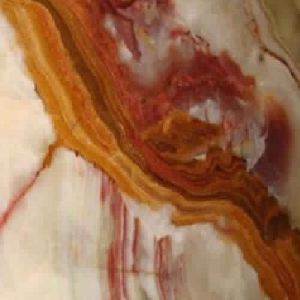
Onyx is a banded variety of the oxide mineral chalcedony. Agate and onyx are both varieties of layered chalcedony that differ only in the form of the bands: agate has curved bands and onyx has parallel bands. The colors of its bands range from white to almost every color (save some shades, such as purple or blue). Commonly, specimens of onyx contain bands of black and/or white. Varieties Onyx is formed of bands of chalcedony in alternating colors. It is cryptocrystalline, consisting of fine intergrowths of the silica minerals quartz and moganite. Its bands are parallel to one another, as opposed to the more chaotic banding that often occurs in agates. Sardonyx is a variant in which the colored bands are sard (shades of red) rather than black. Black onyx is perhaps the most famous variety, but is not as common as onyx with colored bands. Artificial treatments have been used since ancient times to produce both the black color in "black onyx" and the reds and yellows in sardonyx. Most "black onyx" on the market is artificially colored. Imitations and treatments The name has sometimes been used, incorrectly, to label other banded lapidary materials, such as banded calcite found in Mexico, Pakistan, and other places, and often carved, polished and sold. This material is much softer than true onyx, and much more readily available. The majority of carved items sold as "onyx" today are this carbonate material. Artificial onyx types have also been produced from common chalcedony and plain agates. The first-century naturalist Pliny the Elder described these techniques being used in Roman times.[10] Treatments for producing black and other colors include soaking or boiling chalcedony in sugar solutions, then treating with sulfuric or hydrochloric acid to carbonize sugars which had been absorbed into the top layers of the stone.[7][11] These techniques are still used, as well as other dyeing treatments, and most so-called "black onyx" sold is artificially treated.[12] In addition to dye treatments, heating and treatment with nitric acid have been used to lighten or eliminate undesirable colors. Geographic occurrence Onyx is a gemstone found in various regions of the world including Yemen, Uruguay, Argentina, Australia, Brazil, Canada, China, Czech Republic, Germany, India, Pakistan, Madagascar, Latin America, the UK, and various states in the US.
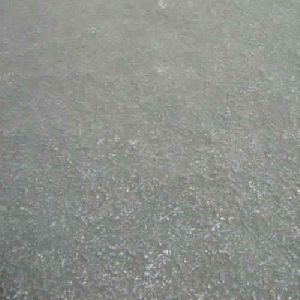
Sandstone Sandstone is a sedimentary rock (rock formed by ancient rivers that slowly deposited material on their beds, that built up layer by layer over millions of years). It has the following properties: It is abrasion resistant, but not always strong, as it is formed in layers. It is usually highly resistant to acids It has a rough finish, and cannot be mirror-polished, as it consists of grains These properties mean that it is good for decks and external areas because of its anti-slip properties. Since sandstone looks and feels very different from granite and marble, it has become fashionable to use these in boutique stores. Sandstone is defined as a rock which is composed of sand-sized grains of various minerals mostly of uniform size and often are smooth and rounded. Color varients are: Beige, Black, Brown, Colourless, Cream, Dark Brown, Green, Grey, Light Green, Light to Dark Grey, Pink, Red, White, Yellow. It mainly used for Countertops, Decorative Aggregates and Interior Decoration
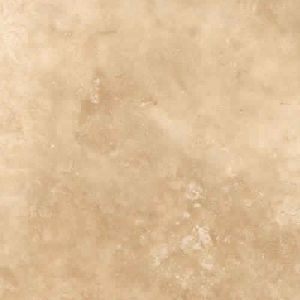
Travertine Marble Travertine is a form of limestone deposited by mineral springs, especially hot springs. Travertine often has a fibrous or concentric appearance and exists in white, tan, cream-colored, and even rusty varieties. It is formed by a process of rapid precipitation of calcium carbonate, often at the mouth of a hot spring or in a limestone cave. In the latter, it can form stalactites, stalagmites, and other speleothems. It is frequently used in Italy and elsewhere as a building material. Travertine is a terrestrial sedimentary rock, formed by the precipitation of carbonate minerals from solution in ground and surface waters, and/or geothermally heated hot-springs. Similar (but softer and extremely porous) deposits formed from ambient-temperature water are known as tufa. Features Travertine forms from geothermal springs and is often linked to siliceous systems that form siliceous sinter. Macrophytes, bryophytes, algae, cyanobacteria, and other organisms often colonise the surface of travertine and are preserved, giving travertine its distinctive porosity. Some springs have temperatures high enough to exclude macrophytes and bryophytes from the deposits. As a consequence, deposits are, in general, less porous than tufa. Thermophilic microbes are important in these environments and stromatolitic fabrics are common. When it is apparent that deposits are devoid of any biological component, they are often referred to as calcareous sinter. Geochemistry Modern travertine is formed from geothermally heated supersaturated alkaline waters, with raised pCO2 (see partial pressure). On emergence, waters degas CO2 due to the lower atmospheric pCO2, resulting in an increase in pH. Since carbonate solubility decreases with increased pH, precipitation is induced. Precipitation may be enhanced by factors leading to a reduction in pCO2, for example increased air-water interactions at waterfalls may be important, as may photosynthesis.[5] Precipitation may also be enhanced by evaporation in some springs. Both calcite and aragonite are found in hot spring travertines; aragonite is preferentially precipitated when temperatures are hot, while calcite dominates when temperatures are cooler. When pure and fine, travertine is white, but often it is brown to yellow due to impurities. Travertine may precipitate out directly onto rock and other inert materials as in Pamukkale or Yellowstone for example.
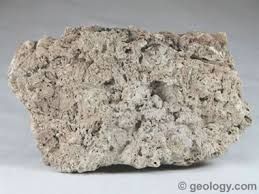
Limestone is a sedimentary rock composed primarily of calcium carbonate (CaCO3) in the form of the mineral calcite. It most commonly forms in clear, warm, shallow marine waters. It is usually an organic sedimentary rock that forms from the accumulation of shell, coral, algal, and fecal debris. It can also be a chemical sedimentary rock formed by the precipitation of calcium carbonate from lake or ocean water. Varieties of Limestone There are many different names used for limestone. These names are based upon how the rock formed, its appearance or its composition, and other factors. Here are some of the more commonly used varieties. Chalk : A soft limestone with a very fine texture that is usually white or light gray in color. It is formed mainly from the calcareous shell remains of microscopic marine organisms such as foraminifers, or the calcareous remains from numerous types of marine algae. Coquina : A poorly-cemented limestone that is composed mainly of broken shell debris. It often forms on beaches where wave action segregates shell fragments of similar size. Fossiliferous Limestone : A limestone that contains obvious and abundant fossils. These are normally shell and skeletal fossils of the organisms that produced the limestone. Lithographic Limestone : A dense limestone with a very fine and very uniform grain size that occurs in thin beds which separate easily to form a very smooth surface. In the late 1700s, a printing process (lithography) was developed to reproduce images by drawing them on the stone with an oil-based ink and then using that stone to press multiple copies of the image. Oolitic Limestone : A limestone composed mainly of calcium carbonate "oolites, " small spheres formed by the concentric precipitation of calcium carbonate on a sand grain or shell fragment. Travertine : A limestone that forms by evaporative precipitation, often in a cave, to produce formations such as stalactites, stalagmites, and flowstone. Tufa : A limestone produced by precipitation of calcium-laden waters at a hot spring, lake shore, or other location. Uses of Limestone Limestone is a rock with an enormous diversity of uses. It could be the one rock that is used in more ways than any other. Most limestone is made into crushed stone and used as a construction material. It is used as a crushed stone for road base and railroad ballast. It is used as an aggregate in concrete. It is fired in a kiln with crushed shale to make cement. Some varieties of limestone perform well in these uses because they are strong, dense rocks with few pore spaces. These properties enable them to stand up well to abrasion and freeze-thaw. Although limestone does not perform as well in these uses as some of the harder silicate rocks, it is much easier to mine and does not exert the same level of wear on mining equipment, crushers, screens, and the beds of the vehicles that transport it. Some additional but also important uses of limestone include: Dimension Stone : Limestone is often cut into blocks and slabs of specific dimensions for use in construction and in architecture. It is used for facing stone, floor tiles, stair treads, window sills, and many other purposes. Roofing Granules : Crushed to a fine particle size, crushed limestone is used as a weather and heat-resistant coating on asphalt-impregnated shingles and roofing. It is also used as a top coat on built-up roofs. Flux Stone : Crushed limestone is used in smelting and other metal refining processes. In the heat of smelting, limestone combines with impurities and can be removed from the process as a slag. Portland Cement : Limestone is heated in a kiln with shale, sand, and other materials and ground to a powder that will harden after being mixed with water. AgLime : Calcium carbonate is one of the most cost-effective acid-neutralizing agents. When crushed to sand-size or smaller particles, limestone becomes an effective material for treating acidic soils. It is widely used on farms throughout the world. Lime : If calcium carbonate (CaC03) is heated to high temperature in a kiln, the products will be a release of carbon dioxide gas (CO2) and calcium oxide (CaO). The calcium oxide is a powerful acid-neutralization agent. It is widely used as a soil treatment agent (faster acting than aglime) in agriculture and as an acid-neutralization agent by the chemical industry. Animal Feed Filler : Chickens need calcium carbonate to produce strong egg shells, so calcium carbonate is often offered to them as a dietary supplement in the form of "chicken grits." It is also added to the feed of some dairy cattle who must replace large amounts of calcium lost when the animal is milked. Mine Safety Dust : Also known as "rock dust." Pulverized limestone is a white powder that can be sprayed onto exposed coal surfaces in an underground mine. This coating improves illumination and reduces the amount of coal dust that activity stirs up and releases into the air. This improves the air for breathing, and it also reduces the explosion hazard produced by suspended particles of flammable coal dust in the air. Limestone has many other uses. Powdered limestone is used as a filler in paper, paint, rubber, and plastics. Crushed limestone is used as a filter stone in on-site sewage disposal systems. Powdered limestone is also used as a sorbent (a substance that absorbs pollutants) at many coal-burning facilities. Limestone is not found everywhere. It only occurs in areas underlain by sedimentary rocks. Limestone is needed in other areas and is so important that buyers will pay five times the value of the stone in delivery charges so that limestone can be used in their project or process.
Share your thoughts with other customers for Bait Al Noor Marble & Granite Trading L.L.C
Add Review